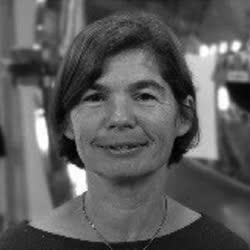
Editorial
Opening
BACKGROUND
 Lucile Beck is head of the CEA Carbon 14 Measurement Laboratory (Climate and Environmental Sciences Laboratory)
Lucile Beck is head of the CEA Carbon 14 Measurement Laboratory (Climate and Environmental Sciences Laboratory)
 Philippe Dillmann is research director at the CNRS and deputy director of the UMR3685 “Nanosciences and innovation for materials, biomedicine and energy” (CEA/CNRS)
Philippe Dillmann is research director at the CNRS and deputy director of the UMR3685 “Nanosciences and innovation for materials, biomedicine and energy” (CEA/CNRS)
 Karine Froment is Director of ARC-Nucléart
Karine Froment is Director of ARC-Nucléart
As Etienne Anheim explains so well in his editorial, heritage is not only a matter of culture, nor is it the preserve of historians, archaeologists or restorers. Physicists and chemists also contribute to the preservation and showcasing of this heritage. This is also the case with the CEA, whose staff have for many years been developing and implementing a range of innovative techniques and technologies on behalf of art, history and archaeology. Their contribution is decisive in advancing knowledge of ancient civilisations, preserving the vestiges of the past, helping with archaeological searches but also understanding the future behaviour of materials, more particularly by obtaining reliable predictions of their alteration.
n the Climate and Environmental Sciences Laboratory (LSCE) in which certain teams are working on situating significant events in the history of the Earth and the evolution of mankind within an absolute chronological framework;
n the Carbon 14 Measurement Laboratory (LMC14), linked to the LSCE, which has technical responsibility for carbon dating (physical-chemical preparation of samples and measurements) for the national scientific community. Since 2003, it has had preparation benches and a mass spectrometer coupled to the ARTEMIS accelerator at its disposal;
n the Nucléart research and conservation workshop (ARC-Nucléart), devoted to the conservation and restoration of archaeological, historical or ethnographic cultural artefacts made of organic materials. It is located at CEA-Grenoble and has large-scale processing facilities for the conservation of objects, an irradiator for gamma radiation applications to cultural heritage (some of which are totally unique) and restoration workshops;
n the Archaeomaterials and Alteration Prediction Laboratory (LAPA), created by the pooling of equipment and personnel from NIMBE (Nanosciences and Innovation for Materials, Biomedicine and Energy, UMR 3685 – CEA/CNRS) and theArchaeomaterials Research Institute (IRAMAT, UMR 5060) at the CNRS, specialises in the study of composite systems consisting more specifically of metal materials, for in-depth analysis of ancient metals in order to understand ancient manufacturing processes and know-how, to study the circulation of metal products and objects and, finally, to restore and protect objects containing them.
Most of the techniques employed at CEA (dating, microprobe metallographic analyses and nanochemistry, gamma irradiation, etc.) are derived from its nuclear expertise. They are supported by cutting-edge R&D, intended not only to constantly improve their performance, but also to conceive of new approaches, whether for dating or for treatment. n
 More (2 min.)
More (2 min.)
The dating methods used at CEA are based on the measurement of naturally present radionuclides
Carbon 14 (14C) is produced by the interaction between cosmic radiation and nitrogen 14 (14N) in the atmosphere. The 14C atom thus formed oxidises to form 14CO2 carbon dioxide which mixes with the CO2 in the air. 14C is thus part of the composition of all living carbon-based matter and all precipitates of calcium carbonate. At the death of the organism, the exchanges cease and the 14C absorbed throughout its lifetime begins to decay, with a half-life of 5,730 years. The current limit of this method is about 50,000 years and can be used to date the death of carbon-based matter or the formation of speleothems.
Uranium 238 (238U) is a natural radioactive isotope present in rock and water for example. When dissolved in magma or in water, it is incorporated into the minerals formed from them, such as zircons and apatites (rocks); carbonates both marine (corals, shells) and continental (stalagmites, flowstones, travertines) and even minerals in contact with water, such as the hydroxyapatite of fossil teeth and bones. Once the system is closed, the 238U decays into thorium 230 (230Th) with a half-life of 75,200 years. The limit for this method is about 650,000 years.
Minerals and rocks contain a small quantity of naturally radioactive potassium 40 (40K). This potassium decays into a noble gas, argon 40 (40Ar). After crystallisation, the 40Ar produced by the 40K contained in the rock accumulates in the crystalline lattice. The half-life of 40K is very long, at 1.25 billion years. This method is thus applicable to samples of any age (1000 years to 4,556 billion years) but is limited to minerals rich in potassium and/or igneous rocks. The 40Ar/39Ar method is based on the same radioactive phenomenon. The difference is that the rock samples are irradiated in order to transform the 39K into 39Ar and allow more precise measurement, with less material.
The luminescence and electron spin resonance (ESR) methods, here simplified as (TL) are based on the accumulation over time of electrons trapped in flaws in the crystalline lattice of the sample under the effect of natural ionising radiation. The total number of trapped electrons depends on the radiation dose absorbed by the sample, also called the paleodose. It is proportional to the intensity of the natural radioactivity (natural dose rate) and the irradiation time. In the simplest case, when the natural dose rate does not vary over time, the age of the sample is equal to the ratio of the paleodose to the annual dose (age = paleodose / annual dose).

Editorial

Definition